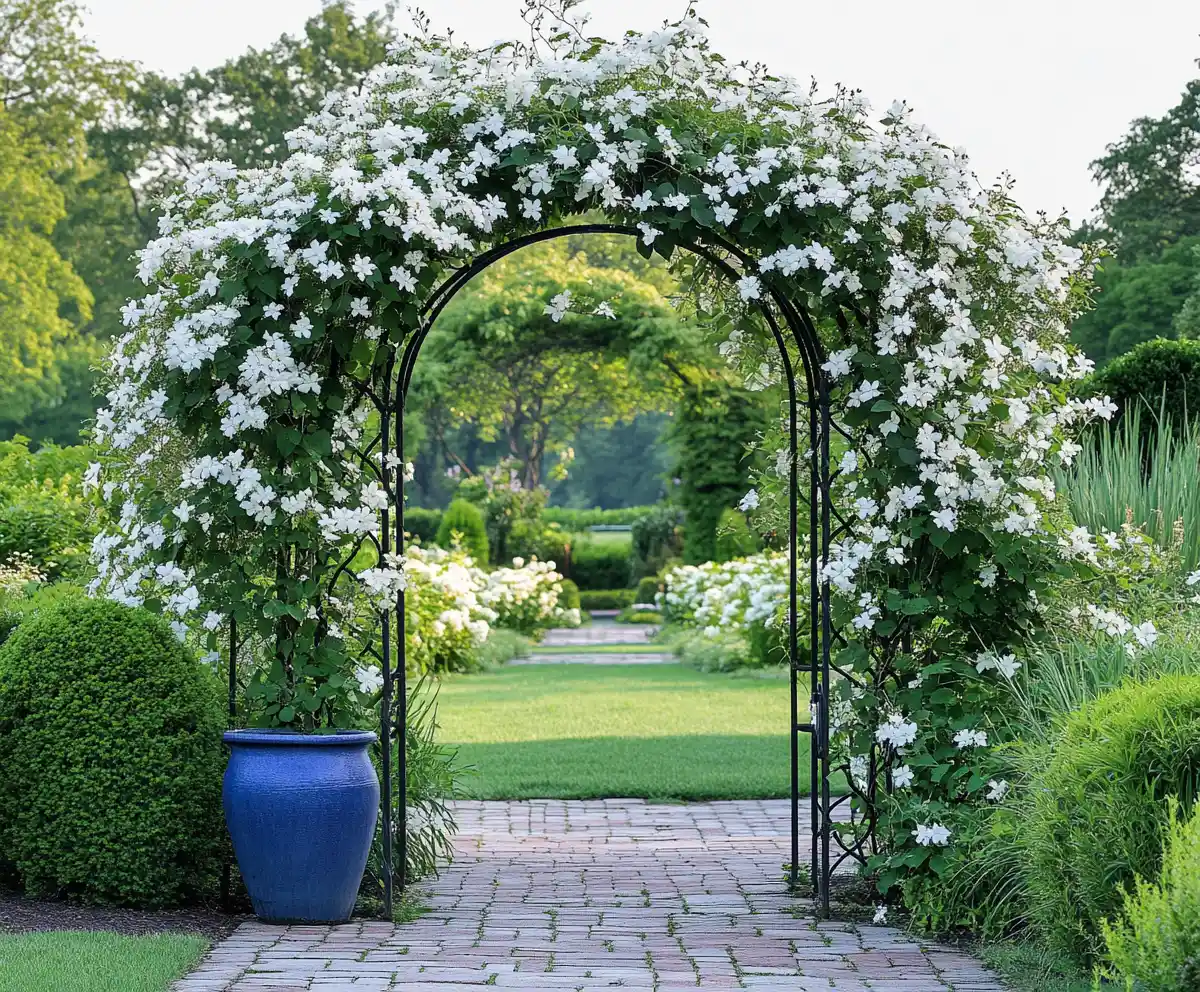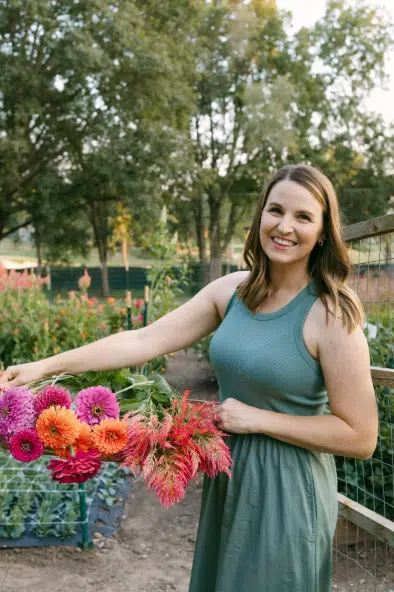There’s something undeniably romantic about a garden filled with roses. Their exquisite blooms, heady fragrances, and range of forms make them an enduring favorite in gardens across the world. Whether your outdoor space is formal and geometric or relaxed and informal, roses can bring both structure and softness, making them a truly versatile choice.
Today’s garden trends lean toward blending roses with perennials and wildflowers for a more natural, eco-conscious aesthetic. This not only enhances the visual appeal but also benefits pollinators and biodiversity. Whether you have a sprawling backyard or a compact balcony, these rose garden ideas will help you plant with purpose and style.
Table of Contents
1. Hedges or Mass Plantings
For a bold, contemporary statement, consider planting roses in structured rows or blocks. Varieties like Knock Out roses are excellent for this, offering continuous bloom and disease resistance. Mass planting brings a modern edge to garden design, especially when paired with minimalist hardscaping and neutral tones.
2. Wildlife-Friendly Roses
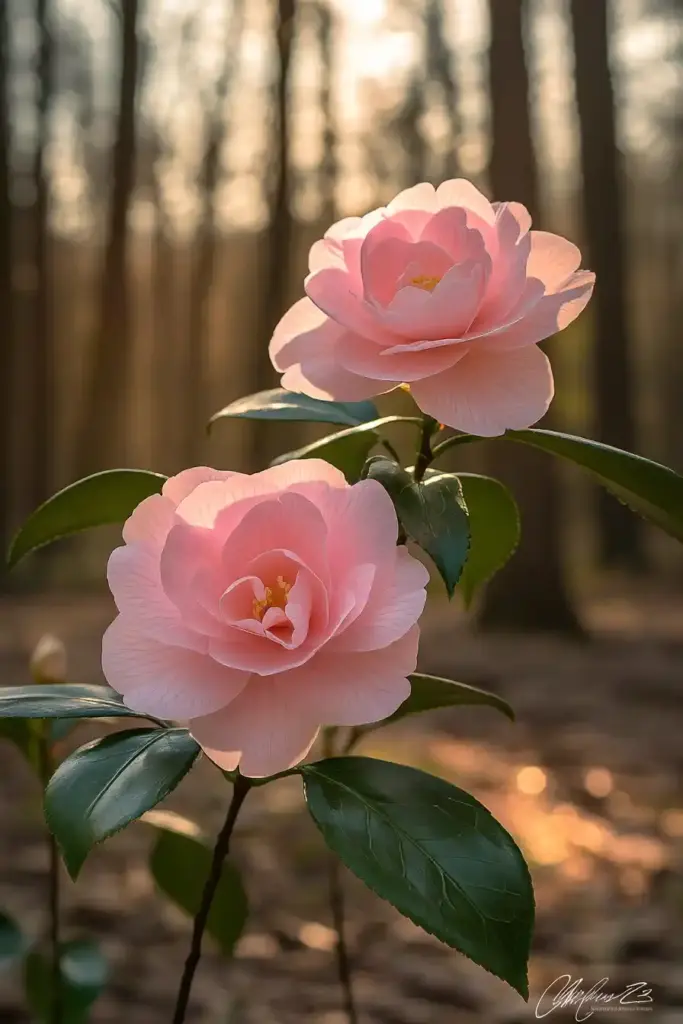
Roses don’t have to be high-maintenance divas. Incorporate native or wild varieties like Rosa carolina to create a naturalistic look while supporting pollinators. These types often produce open blooms with visible stamens, making them a valuable nectar source for bees and butterflies.
3. Grow Roses Through Trees
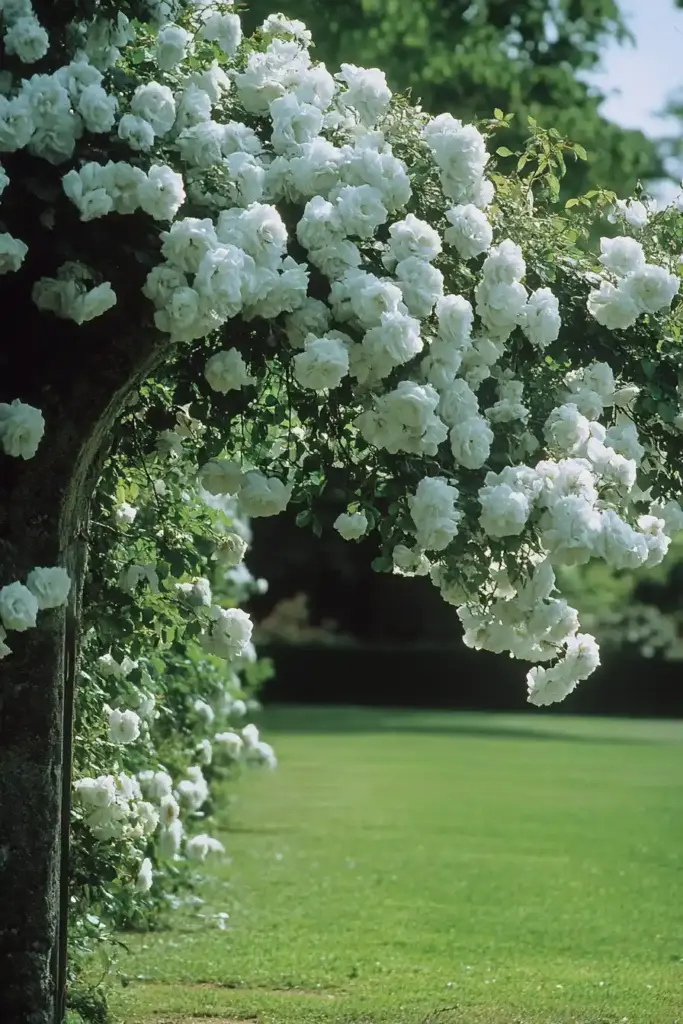
Introduce vertical whimsy by growing rambling roses through small trees or large shrubs. Gentle varieties like Francis E. Lester weave themselves beautifully through branches, adding bursts of color and scent with minimal intervention.
4. Roses as Ground Cover
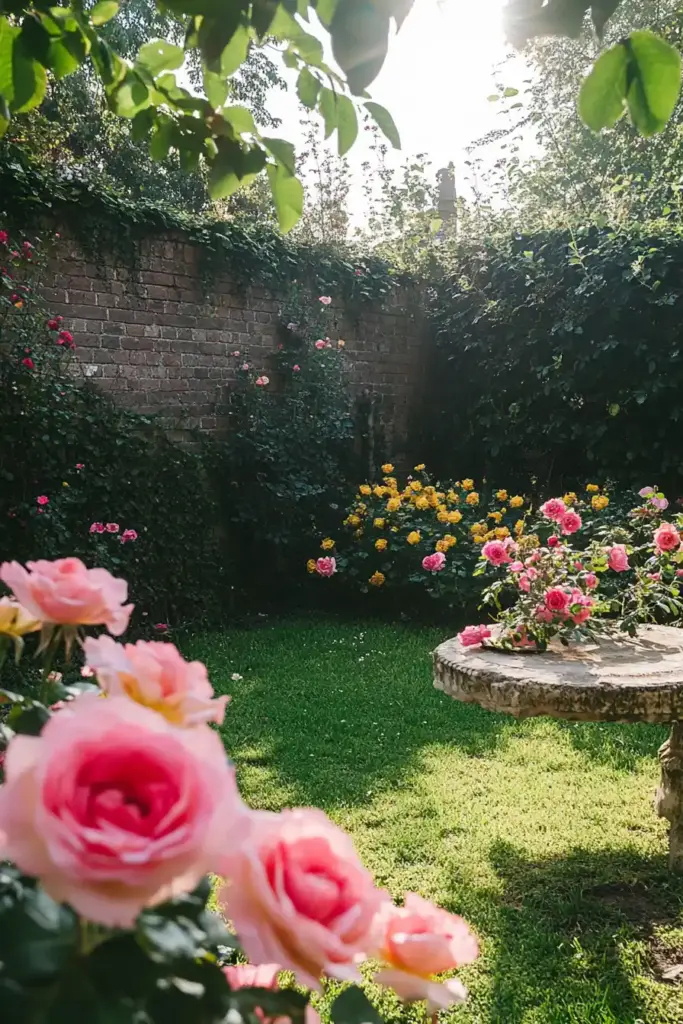
Not all roses grow upright. Ground cover roses like the Flower Carpet series spread low and wide, suppressing weeds while offering bursts of color. Combine them with ground-hugging perennials like Nepeta (catmint) for a flowing, meadow-like effect.
5. Over Seating Areas
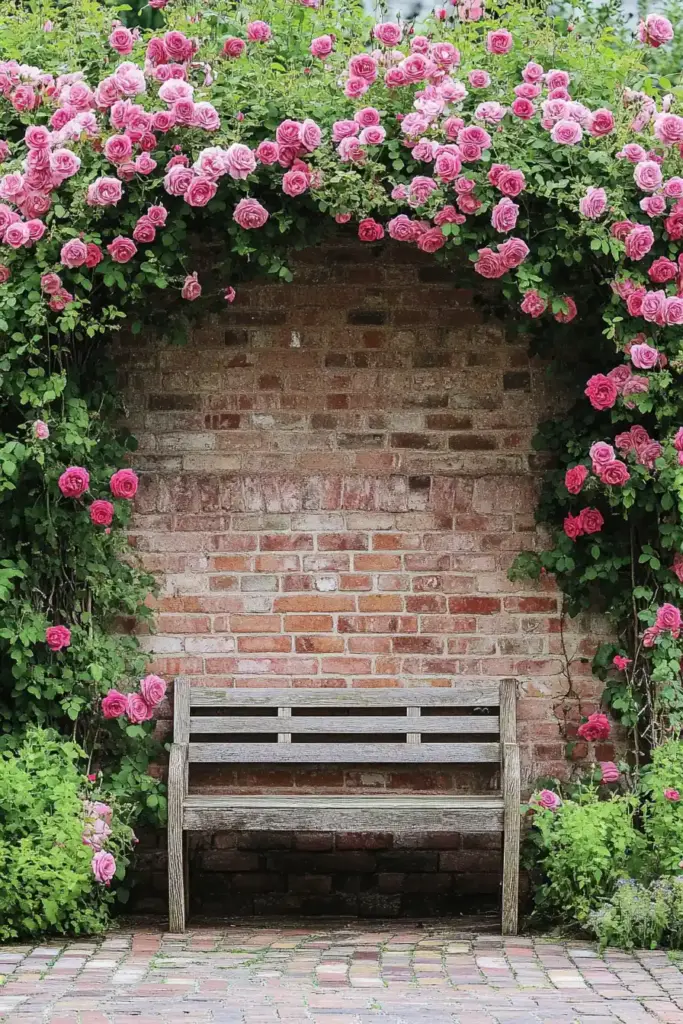
Imagine relaxing under a canopy of fragrant blooms. Train ramblers such as Phyllis Bide over benches, pergolas, or arches to create intimate, shaded nooks. The sight and scent of roses overhead make any seating area feel like a sanctuary.
6. Informal Mixed Borders
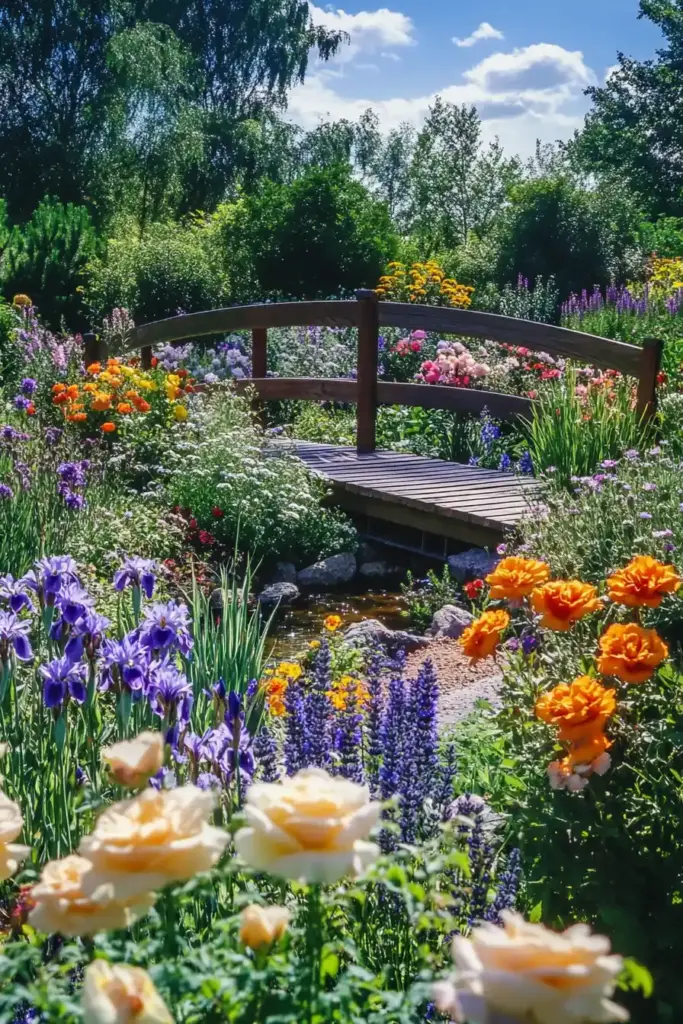
Blend roses with perennial companions to create soft, romantic borders. Flowers like yarrow, foxglove, and sea holly add texture and seasonal interest while helping integrate roses into a more relaxed garden design. The result? A blooming, cottage-style haven.
7. Color Block Planting
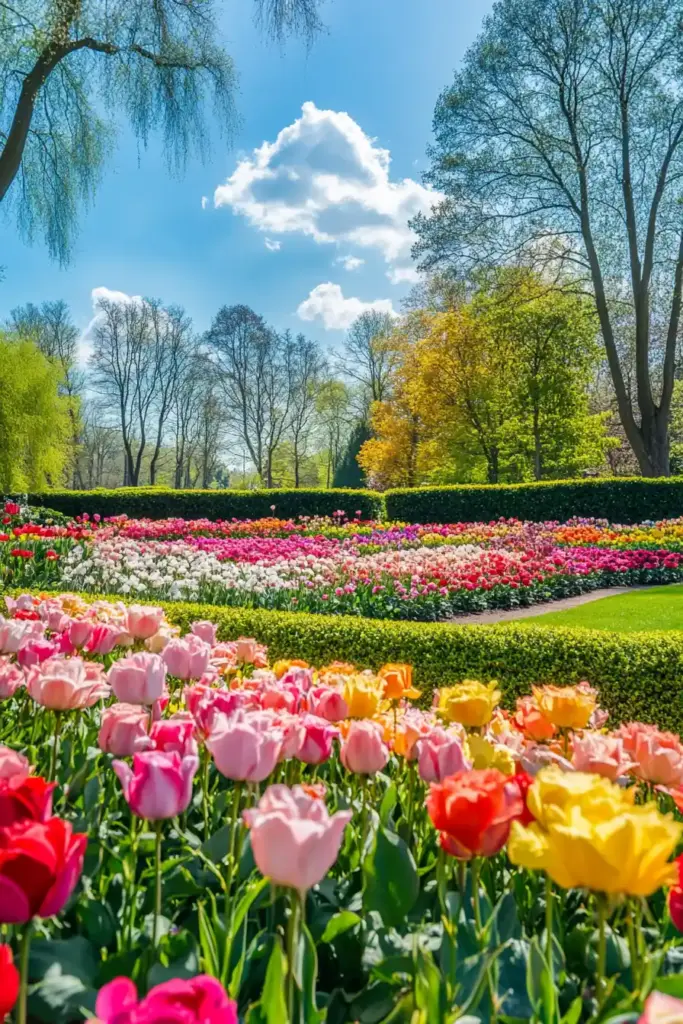
For a sophisticated and eye-catching layout, mass plant a single rose variety in groups of three, five, or seven. This technique, often used in formal gardens like RHS Rosemoor, brings visual cohesion and drama—ideal for garden beds or borders.
8. Pathways with Rose Arches

Transform ordinary garden paths into magical walkways by placing rose arches overhead. Climbers like Adelaide d’Orleans create enchanting entryways and make moving through your garden a sensory experience.
9. Lavender & Roses

Pairing English roses with lavender is a timeless combination. Try Boscobel rose alongside English lavender for a rich contrast in color and a blend of complementary scents. Plus, both plants are pollinator-friendly and thrive in similar conditions.
10. Soften Walls & Structures
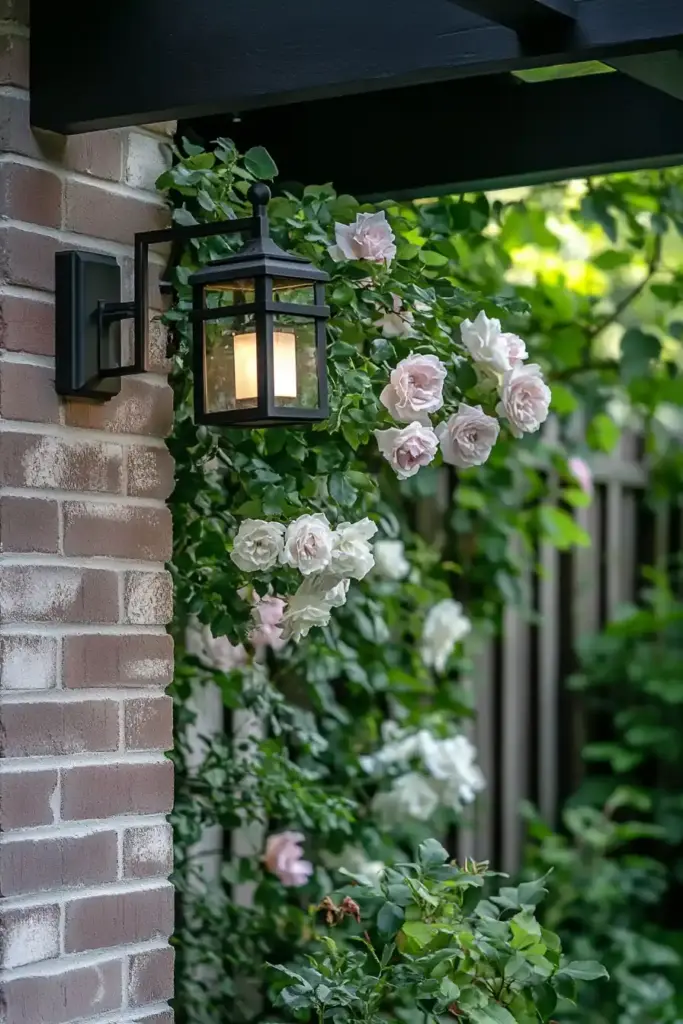
Climbing and rambling roses can help blur the lines between hard and soft landscaping. Train them against fences, sheds, or even garages to soften edges and add living architecture. Phyllis Bide is a top pick for vertical impact with vintage charm.
11. Around Doorways
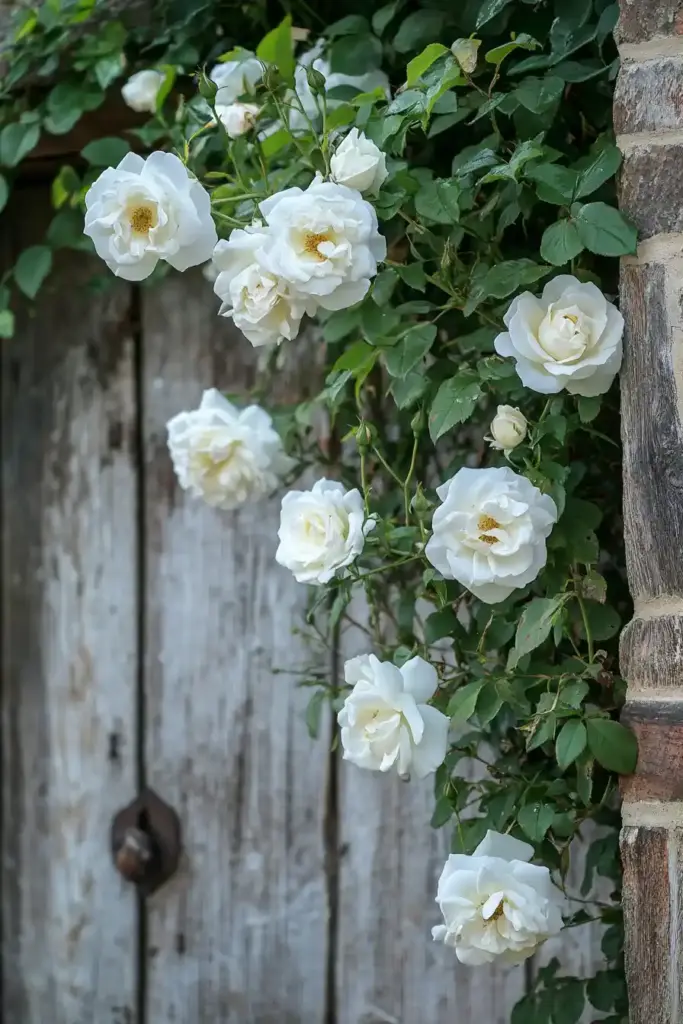
Welcome guests with blooming beauty by framing doorways with thornless rose varieties like Mortimer Sackler. Their upright habit and gentle appearance make them ideal for entrances and walkways.
12. Potted Roses for Patios
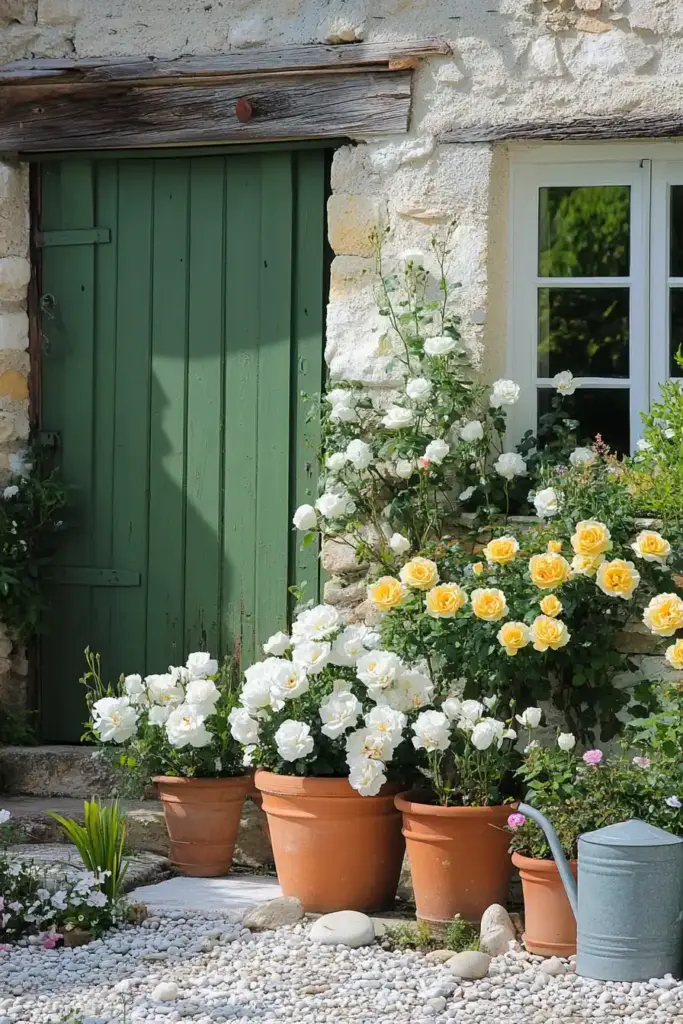
Even small spaces can host a rose garden. Compact varieties like Harlow Carr, Desdemona, and Vanessa Bell perform beautifully in pots. Place them on patios, balconies, or by the front door for an elegant splash of color.
13. Climbing Roses on Obelisks
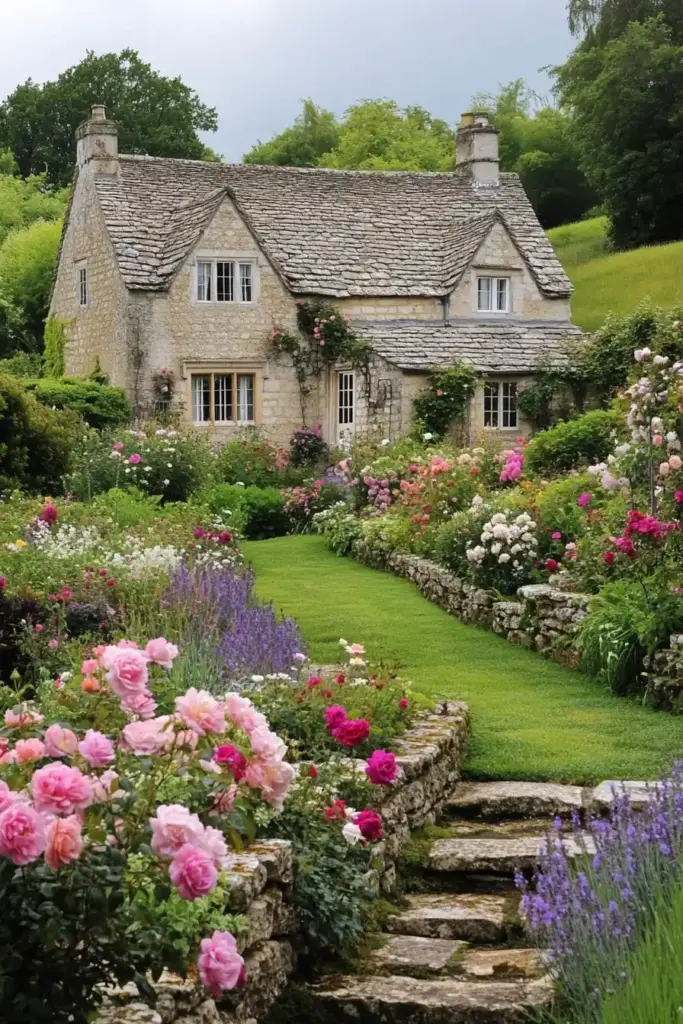
Introduce vertical accents within beds by growing roses up obelisks. Varieties like Gertrude Jekyll bring structure and fragrance to mixed borders, drawing the eye upward.
14. Focal Point Pergolas
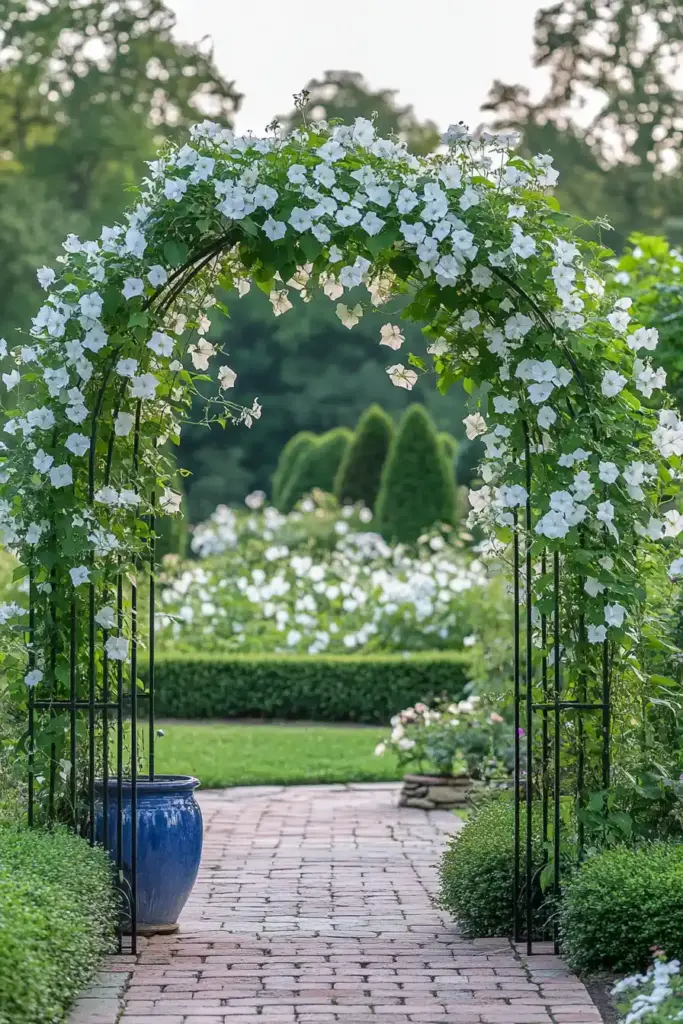
For a breathtaking centerpiece, train vigorous ramblers like Rosa mulliganii over a pergola. As they spill down with clusters of flowers, they transform the structure into a natural ceiling of blooms—ideal for entertaining spaces or garden focal points.
🌱 Bonus Tips for Rose Garden Success

Starting a Rose Garden
- Soil: Roses thrive in free-draining, slightly acidic soil.
- Avoid Replanting in Old Rose Spots: Known as “rose sickness,” replanting in old rose beds can stunt new growth. Either replace the soil or choose a different location.
- Boost with Mycorrhizal Fungi: These helpful fungi improve root development and resilience—particularly helpful for establishing new plants.
Wildlife-Friendly Picks
If you’re planting with pollinators in mind, choose roses with single or semi-double flowers that expose their stamens. Great options include:
- Jacqueline du Pré
- Rosa Mundi
- Comte de Champagne
- Scabrosa
- Geranium
These selections balance beauty with biodiversity, ensuring your rose garden supports both style and sustainability.
🌸 Frequently Asked Questions – All About Growing Roses
🌱 1. I’m new to gardening—are roses hard to grow?
Not at all! Many modern rose varieties are bred for resilience and ease of care. If you’re just starting, look for low-maintenance types like the Knock Out series, Flower Carpet roses, or shrub roses from David Austin. They’re generally disease-resistant and bloom repeatedly with minimal fuss.
🌞 2. How much sun do roses need?
Roses love the sun. Aim for at least 6 hours of direct sunlight daily for optimal flowering. Morning sun is especially important to help dry dew and prevent diseases. That said, some varieties can tolerate partial shade—just expect fewer blooms.
💧 3. How often should I water roses?
Water deeply and regularly, especially in hot or dry weather. A general rule is once or twice a week, giving them a good soak at the base. Avoid overhead watering to reduce the risk of fungal issues like black spot or powdery mildew.
🌿 4. What’s the best soil for growing roses?
Roses prefer well-drained, loamy soil that’s rich in organic matter. Aim for a slightly acidic pH between 6.0 and 6.5. Before planting, enrich the soil with compost or well-rotted manure, and consider using mycorrhizal fungi at the roots to encourage healthy growth.
🍂 5. Can I plant roses near other plants?
Absolutely! In fact, companion planting can help reduce pests and add seasonal interest. Great companions include:
- Lavender: repels aphids and enhances fragrance.
- Catmint (Nepeta): deters pests and looks dreamy.
- Sage, yarrow, or foxglove: natural pest control with beautiful blooms.
Just give your roses enough space to breathe—air circulation is key to keeping them healthy.
✂️ 6. When and how should I prune my roses?
- Winter or early spring (while still dormant) is the best time for major pruning.
- Remove dead, diseased, or crossing branches first.
- Cut above outward-facing buds at a 45° angle to encourage open growth.
- Shrub roses can be cut back by a third or more; climbers and ramblers may need more gentle shaping depending on their flowering habit.
🐞 7. How do I deal with common rose pests and diseases?
Here are a few issues to watch for, along with simple solutions:
- Aphids: Spray off with a hose or use insecticidal soap.
- Black Spot: Prevent with proper spacing, mulching, and avoiding overhead watering. Treat with fungicide if needed.
- Powdery Mildew: Ensure good airflow, water at the base, and use a sulfur-based spray if it spreads.
🪴 8. Can I grow roses in containers?
Yes! Many roses, especially compact or patio varieties, thrive in pots. Choose a large container with good drainage and fill it with high-quality compost. Water regularly and feed with a balanced rose fertilizer during the growing season. Top choices include:
- Desdemona
- Harlow Carr
- The Fairy
- Vanessa Bell
🐝 9. How can I make my rose garden more wildlife-friendly?
Opt for varieties with single or semi-double flowers so pollinators can access the stamens easily. Skip chemical pesticides and provide a mix of flowering plants that bloom at different times. Adding a water source like a birdbath or shallow dish also encourages helpful insects and birds.
🧪 10. What is ‘rose sickness,’ and how do I avoid it?
“Rose sickness” happens when you plant a new rose in the same spot where another rose previously grew, leading to stunted growth. To avoid it:
- Replace the soil in that area with fresh, nutrient-rich soil.
- Add mycorrhizal fungi at planting time to help new roots establish.
- Alternatively, choose a new planting location.
🌼 11. Which roses are best for fragrance?
Fragrance is a personal preference, but some of the best-loved scented roses include:
- Gertrude Jekyll: rich, old rose scent.
- Munstead Wood: deep, fruity fragrance.
- Desdemona: myrrh-scented blooms.
- Evelyn: famously perfumed and peachy.
- Rosa damascena: used in rose oil and perfumes.
🧤 12. Do all roses have thorns?
Most roses do, but some varieties are nearly thornless—ideal for pathways, children’s gardens, or around doorways. Look for:
- Mortimer Sackler
- Zephirine Drouhin
- Reine des Violettes
- Madame Alfred Carrière
🌹 Wrapping Up
With the right care and thoughtful planting, roses can transform any garden into a space of beauty, fragrance, and charm. Whether you’re drawn to the wild romance of ramblers or the tidy symmetry of hedges, there’s a rose for every purpose—and every gardener.
Let your creativity bloom, and don’t be afraid to mix roses with other textures, heights, and colors. With these tips and ideas, you’re ready to grow a garden that’s as timeless as the rose itself.
Final Thoughts
Whether you’re dreaming of a fragrant pergola, a cottage-style border, or a minimalist mass planting, roses offer a versatile palette to work with. By mixing structural elements with naturalistic planting, and considering both aesthetics and ecology, your rose garden can be as beautiful as it is beneficial. Happy planting! 🌹
🌿 Love gardening inspiration? Follow me on Pinterest for bold plant ideas, tips, and seasonal color!
More Posts
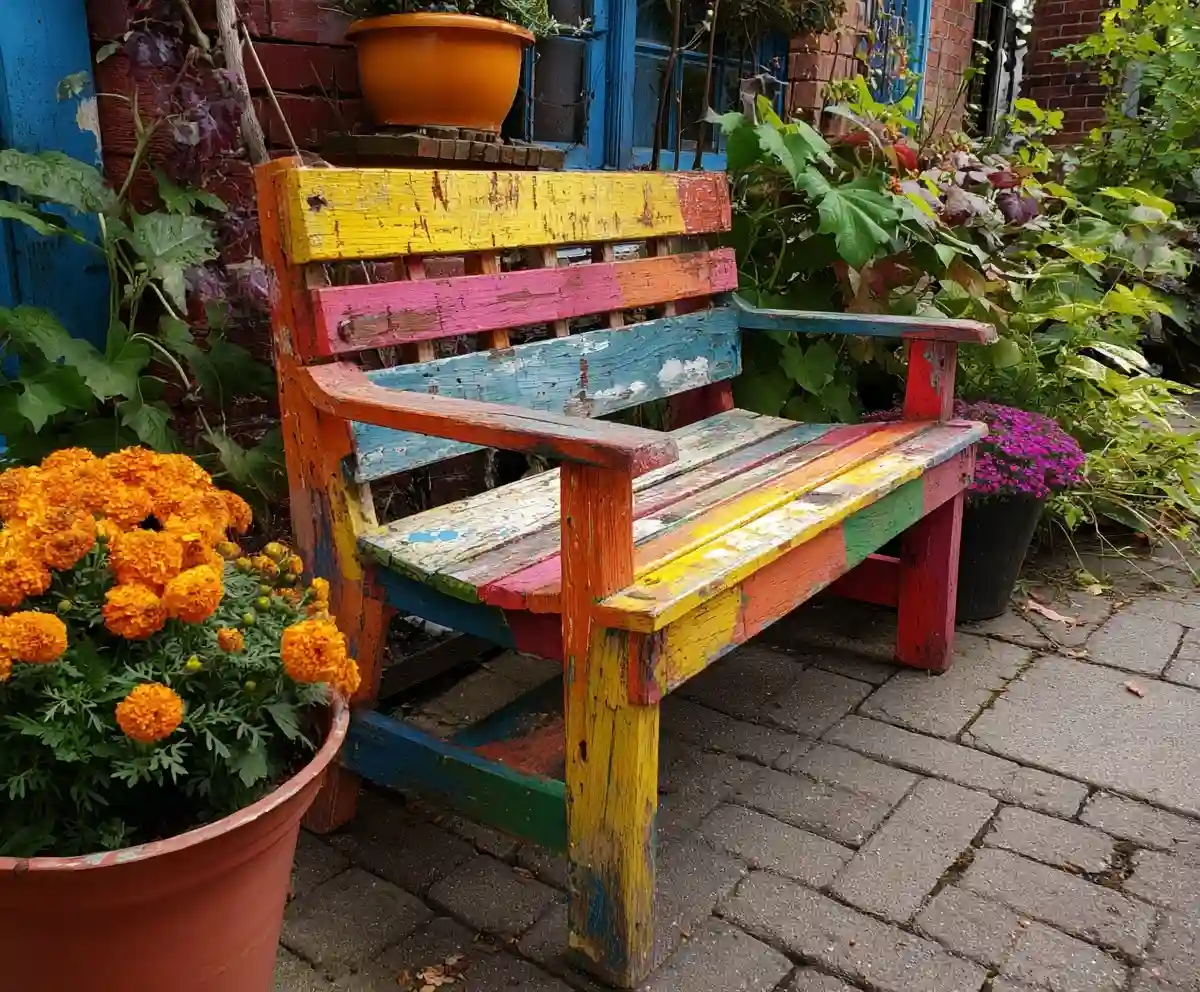
19+ Budget-Friendly Backyard Makeover Ideas
Backyard makeover ideas can turn even the most ordinary outdoor space into a warm, inviting retreat—without draining your wallet.
Read More →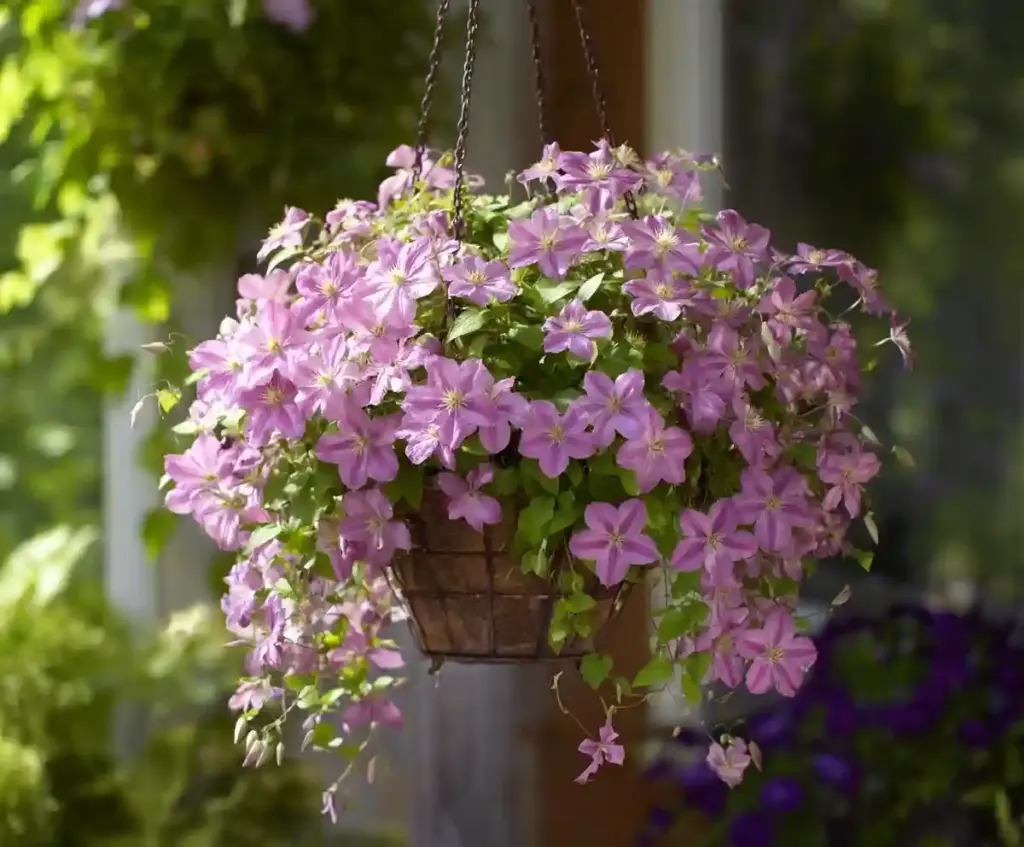
21 Stunning & Simple DIY Clematis Trellis Designs
DIY clematis trellis designs are a beautiful way to blend creativity with function in your garden.
Read More →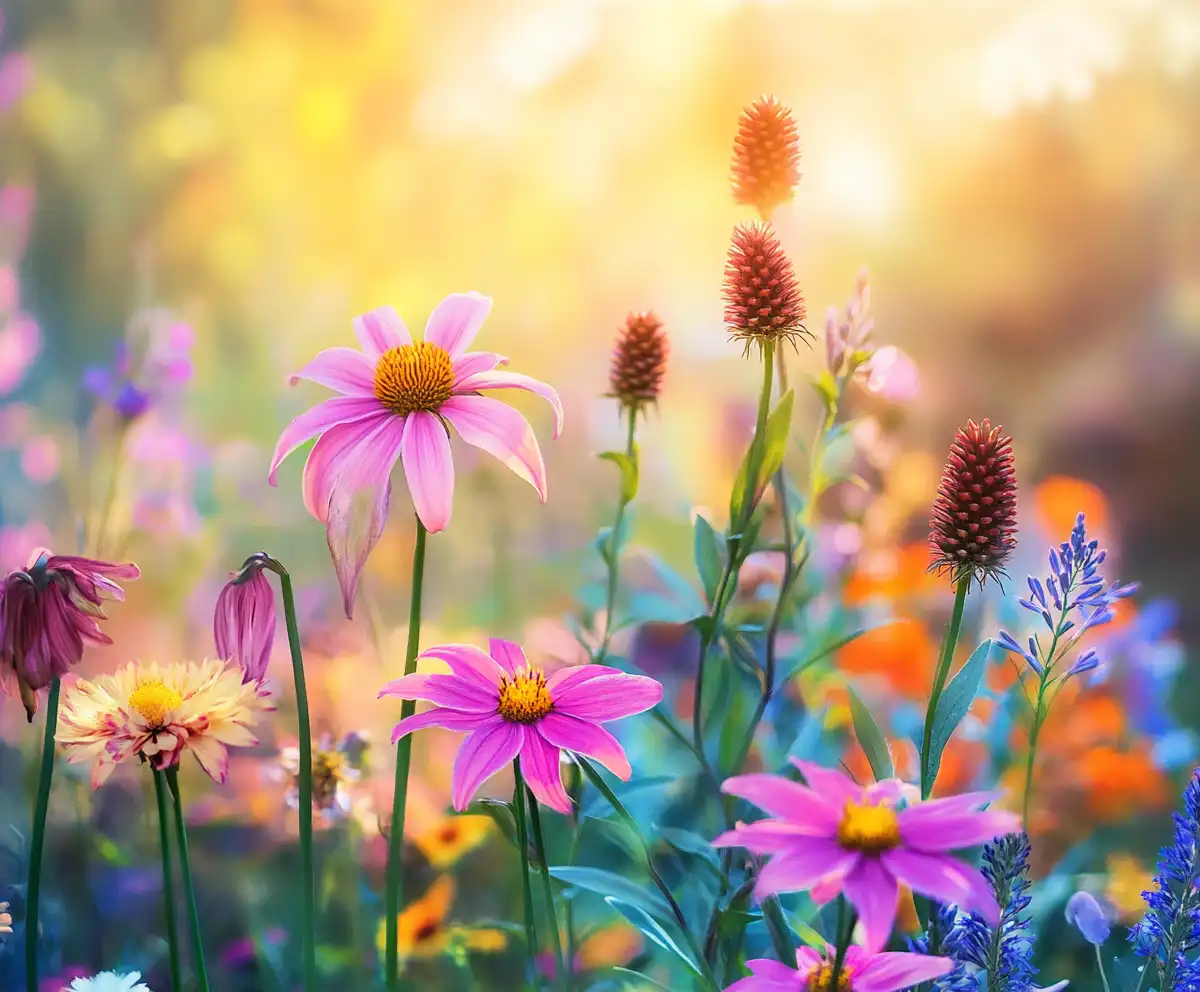
12 Full Sun Perennials That Bloom All Summer
Explore a selection of hardy perennials that flourish and bloom beautifully in full sun throughout the summer.
Read More →
Houseplants for Living Room
Find the perfect houseplants to brighten and purify your living room while adding a touch of nature indoors.
Read More →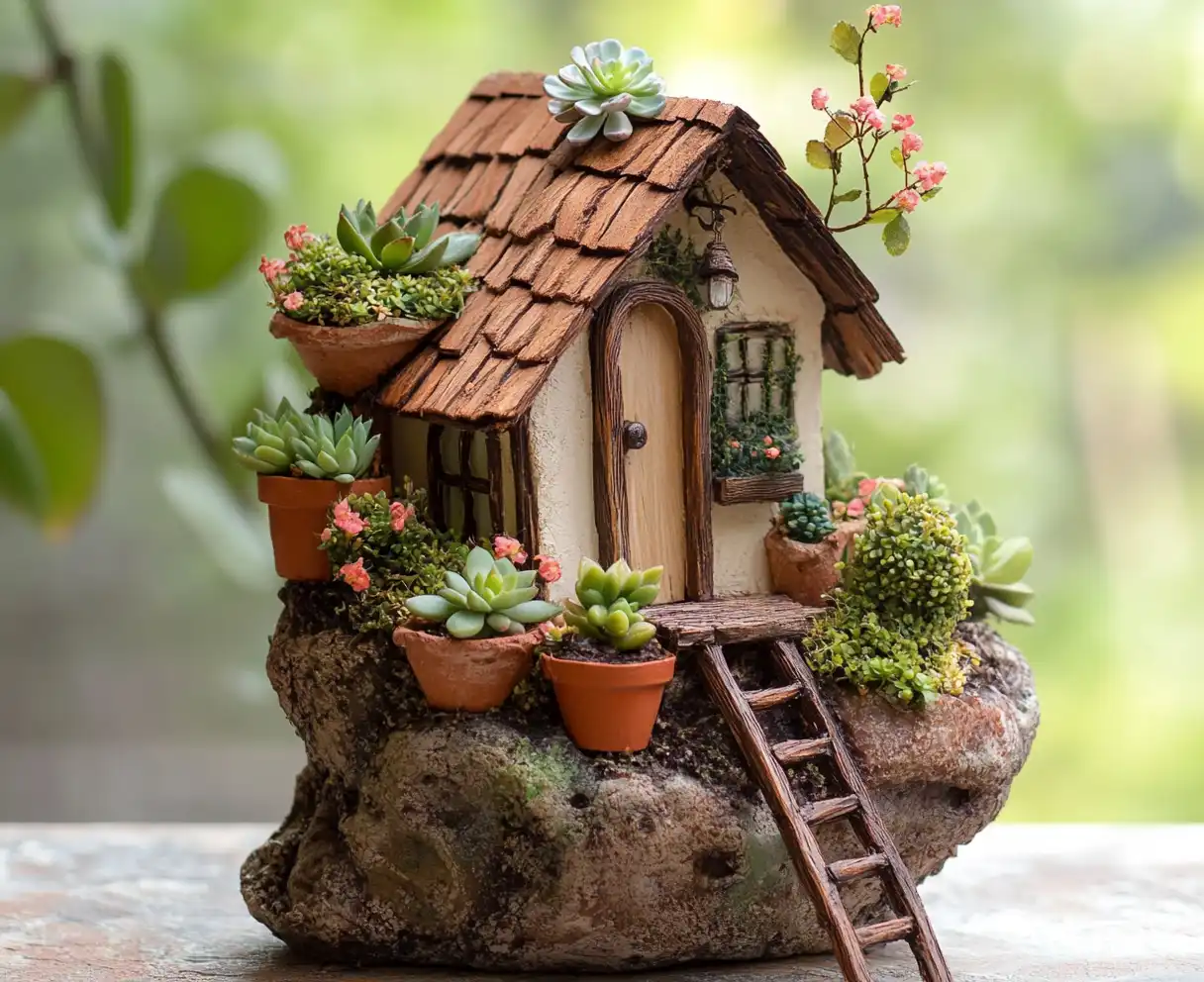
Backyard Play Area for Kids
Create a fun and safe backyard play area for kids with these inspiring design ideas and tips.
Read More →
Top Privacy Trees
Discover top tree varieties that provide natural privacy and enhance your outdoor space.
Read More →
